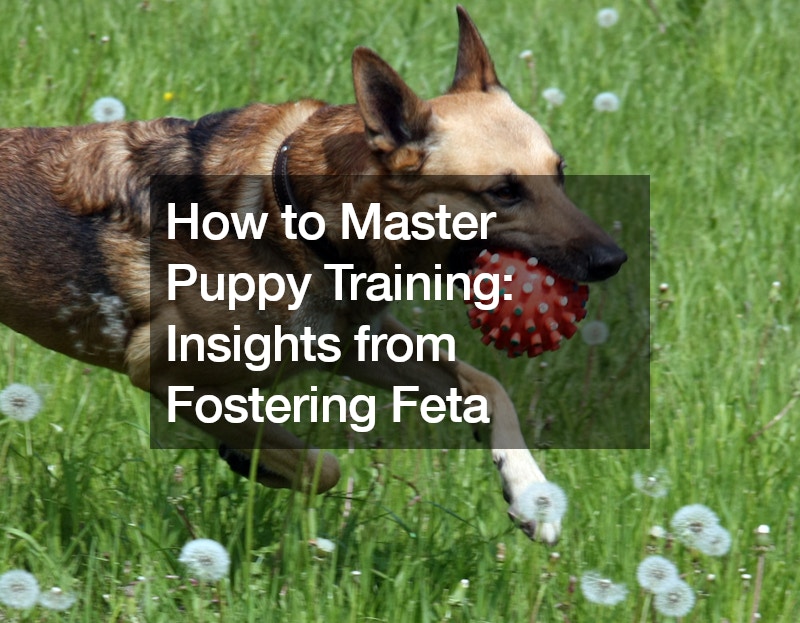Puppies are adorable bundles of energy and curiosity but also require diligent training to become well-behaved companions. This comprehensive guide will delve into key strategies for mastering puppy training, drawing insights from expert advice presented in a recent video tutorial.
Understanding the Foundations of Puppy Training
The video emphasizes the importance of three fundamental aspects: trust, respect, and love. These principles form the cornerstone of effective puppy training, guiding owners to establish a strong bond with their furry friends.
Trust is built by providing consistent guidance and positive reinforcement, while respect is earned through clear communication and boundaries. Love serves as the underlying motivation, driving owners to nurture their puppies with care and affection.
Expanding on trust, it’s essential to understand that building trust with a puppy takes time and patience. Each interaction, whether teaching a new command or correcting a behavior, is an opportunity to strengthen the bond between owner and puppy. For example, when teaching a puppy to “come” when called, owners can start in a quiet, familiar environment with minimal distractions, gradually increasing the level of difficulty as the puppy becomes more proficient.
Building Trust through Patient Guidance
One of the key takeaways from the video is the significance of patience in training puppies. Owners can foster a positive learning environment by trusting in the puppy’s ability to learn and respecting their individual pace. For example, when teaching puppies to wait patiently, owners can gradually increase the duration of the wait period, rewarding the puppy for compliance and reinforcing trust and respect.
Consistency is paramount in building trust and establishing clear expectations. Puppies thrive on routine and predictability, so maintaining a consistent training schedule and using the same cues for commands helps reinforce learning and build confidence.
Establishing Boundaries and Exploration
Another crucial aspect highlighted in the video is the importance of outdoor activities for puppies. Through activities like walking on a leash, puppies learn to follow, play, and explore their surroundings. By maintaining a balance between freedom and guidance, owners can encourage healthy exploration while reinforcing obedience and safety. For instance, during leash training, owners can use treats and praise to encourage puppies to walk beside them calmly, gradually increasing the distance and duration of walks as the puppy becomes more confident.
Outdoor exploration also provides valuable socialization opportunities for puppies, exposing them to different people, animals, and environments. Positive experiences during these outings help puppies develop confidence and adaptability, essential traits for a well-rounded adult dog.
Introducing the Concept of the Crate
The video also introduces the concept of crate training to provide puppies with a safe and comfortable space. Crate training helps puppies develop a sense of security and routine, which is essential for their well-being and development. By associating the crate with positive experiences and relaxation, owners can make it a welcoming retreat for their furry companions. Additionally, crate training can be used to manage separation anxiety and prevent destructive behavior when left alone.
When introducing a puppy to the crate, making the experience as positive as possible is crucial. Placing familiar toys and bedding inside the crate and providing treats and praise when the puppy enters voluntarily helps create positive associations. Gradually increasing the amount of time the puppy spends in the crate, starting with short intervals and gradually lengthening them, helps prevent anxiety and builds confidence.
Practical Techniques for Effective Training
Throughout the video, practical training techniques are demonstrated, emphasizing the use of positive reinforcement and clear communication. From teaching puppies to wait patiently to walking on a leash with confidence, each exercise reinforces the principles of trust, respect, and love. For example, when teaching basic commands like “sit” or “stay,” owners can use treats and praise to reward desired behaviors, gradually phasing out treats as the puppy becomes more proficient.
Furthermore, consistency and patience are essential when practicing these techniques. Repetition and reinforcement help solidify learning, and maintaining a positive and encouraging demeanor fosters a strong bond between owner and puppy. Additionally, incorporating training into daily routines, such as meal times and play sessions, helps reinforce good behavior and promotes consistency.
Conclusion: Nurturing Well-Behaved Companions
Mastering puppy training requires patience, consistency, and a deep understanding of canine behavior. By following expert guidance and applying proven techniques, owners can build a strong foundation for a lifelong bond with their furry companions. Dedication and love make every training session an opportunity to nurture well-behaved and happy puppies, ensuring a harmonious relationship between humans and their canine companions.
.






